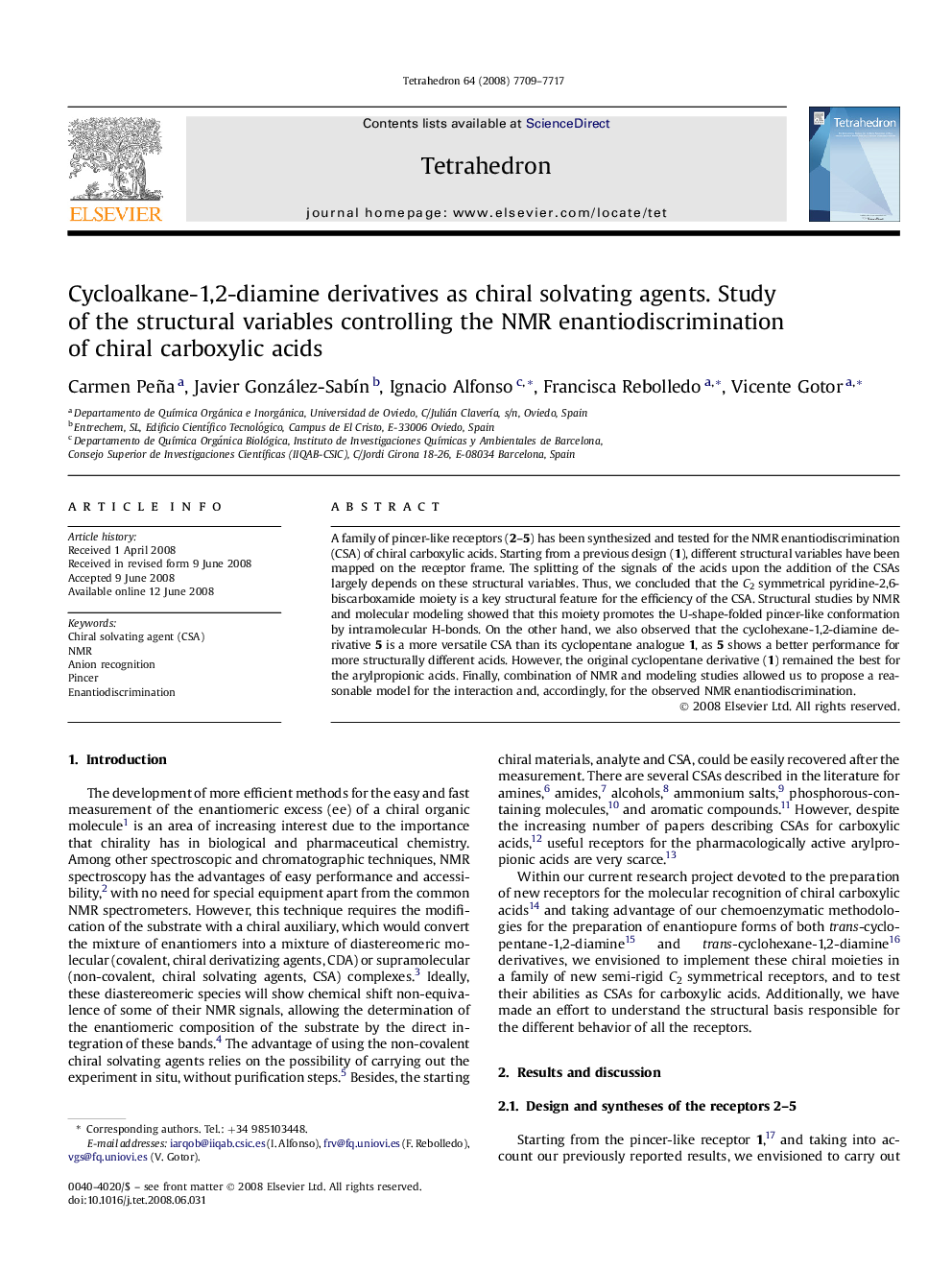| Article ID | Journal | Published Year | Pages | File Type |
|---|---|---|---|---|
| 5225477 | Tetrahedron | 2008 | 9 Pages |
A family of pincer-like receptors (2-5) has been synthesized and tested for the NMR enantiodiscrimination (CSA) of chiral carboxylic acids. Starting from a previous design (1), different structural variables have been mapped on the receptor frame. The splitting of the signals of the acids upon the addition of the CSAs largely depends on these structural variables. Thus, we concluded that the C2 symmetrical pyridine-2,6-biscarboxamide moiety is a key structural feature for the efficiency of the CSA. Structural studies by NMR and molecular modeling showed that this moiety promotes the U-shape-folded pincer-like conformation by intramolecular H-bonds. On the other hand, we also observed that the cyclohexane-1,2-diamine derivative 5 is a more versatile CSA than its cyclopentane analogue 1, as 5 shows a better performance for more structurally different acids. However, the original cyclopentane derivative (1) remained the best for the arylpropionic acids. Finally, combination of NMR and modeling studies allowed us to propose a reasonable model for the interaction and, accordingly, for the observed NMR enantiodiscrimination.
Graphical abstractSeveral receptors 2-5, structurally related to 1, have been synthetized and tested as CSA for the NMR enantiodiscrimination of chiral carboxylic acids. The presence of the C2 symmetrical pyridine-2,6-biscarboxamide moiety is the key structural factor for the efficiency of the CSA, the best results being obtained with 1 and 5.Download full-size image
